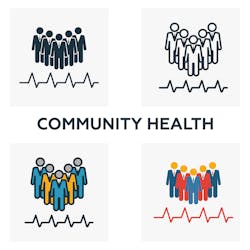Community health information exchanges (HIEs) are increasingly reporting connections with community and social service organizations and are moving significant volumes of data, according to the results of the first annual survey of HIEs by the Strategic Health Information Exchange Collaborative (SHIEC).
They survey respondents included 81 percent of SHIEC members, a group consisting of nearly 80 HIEs across the U.S. and more than 100 other strategic business and technical members. Recently, SHIEC announced that 92 percent of the U.S. population is served by HIEs across the nation that are members of SHIEC.
Nearly all responding HIEs have partnered with one or more of the following community and social service organizations: correctional health, social service agencies, drug and alcohol treatment programs, first responders, school nurses or blood banks.
The responding SHIEC HIEs are exchanging 3.3 billion messages annually and delivering 453 million alerts of admissions, discharges and transfers (ADTs) to HIE participants to improve coordination of care, including nationwide HIE to HIE alerts through the Patient Centered Data Home (PCDH) initiative. In 2016, SHIEC member HIE’s came together to connect the nation through the Patient Centered Data Home Model, aiming to enable near-real time alerting about important clinical events.
Further regarding HIEs’ connection to whole communities and unique partners, 72 percent of SHIEC HIEs are partnering with first responders, 70 percent with correctional health facilities, and 58 percent each with social service agencies, drug and alcohol treatment programs, and dialysis centers, respectively.
Meanwhile, 66 percent of HIEs provide alerting and monitoring reports, 63 percent provide public health reports, while 44 percent provide electronic clinical quality measures and frequent flyer reporting, respectively. Just 27 percent of HIEs provide opiate monitoring, according to the survey results.
“The survey results demonstrate real progress for the SHIEC community,” according to Kelly Hoover Thompson, CEO of SHIEC. “These results not only demonstrate tangible progress toward interoperability in the sheer volume of alerts and transactions, they also underscore the value of the SHIEC community in supporting and gathering data from community and social service organizations that advance care for the whole patient,” Thompson said.


